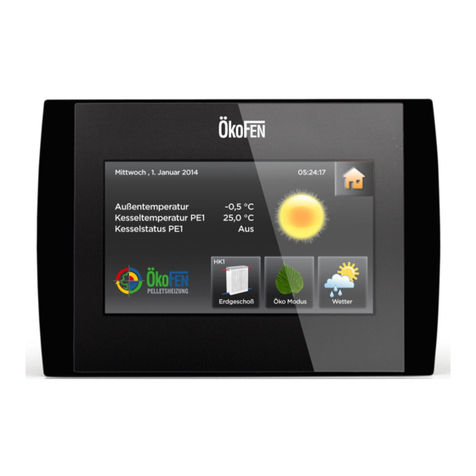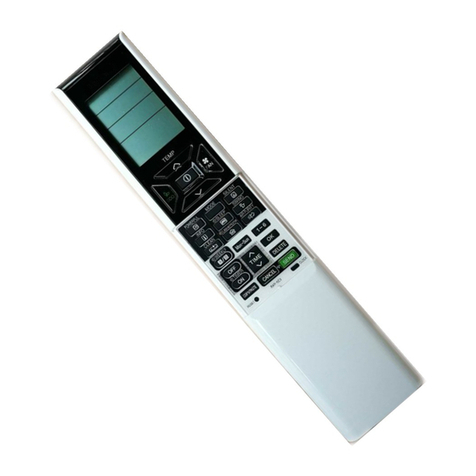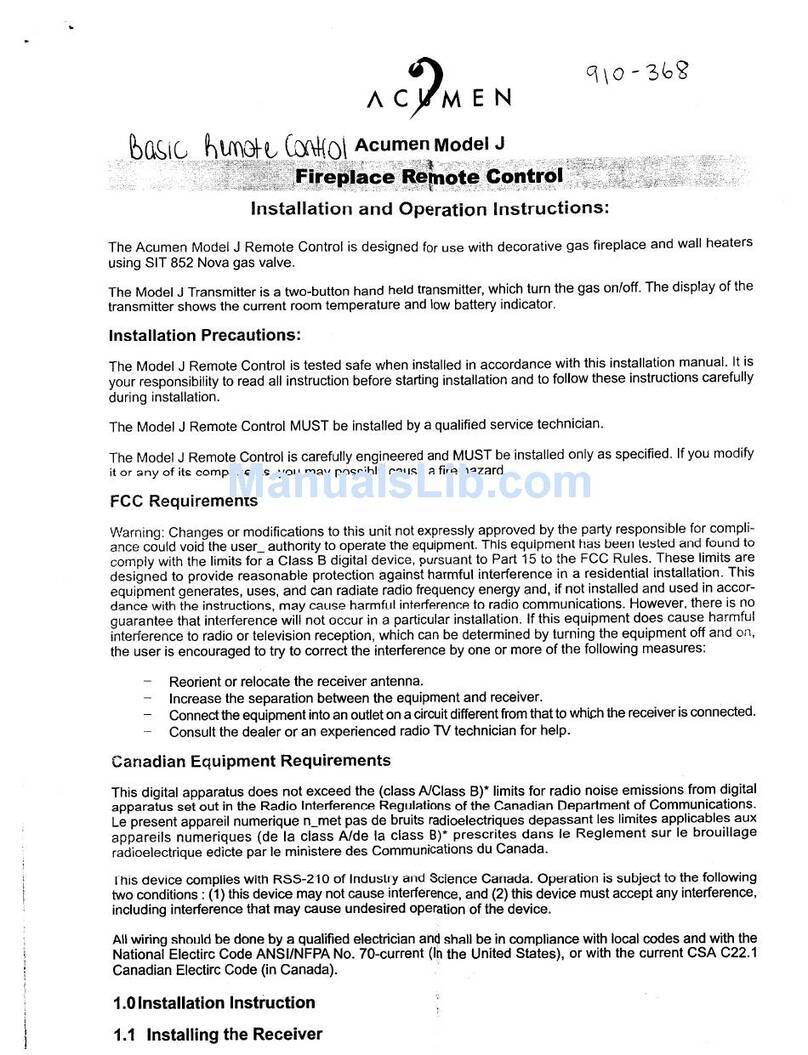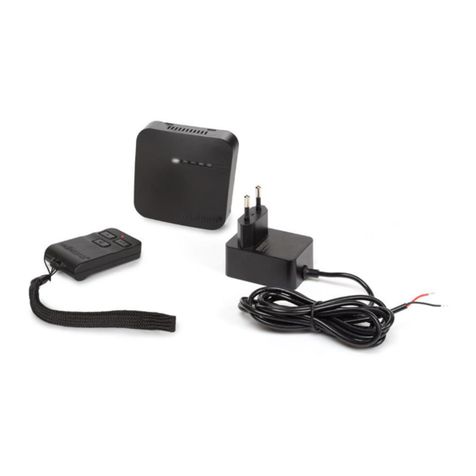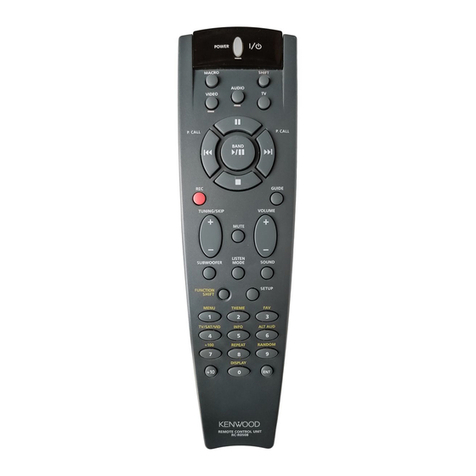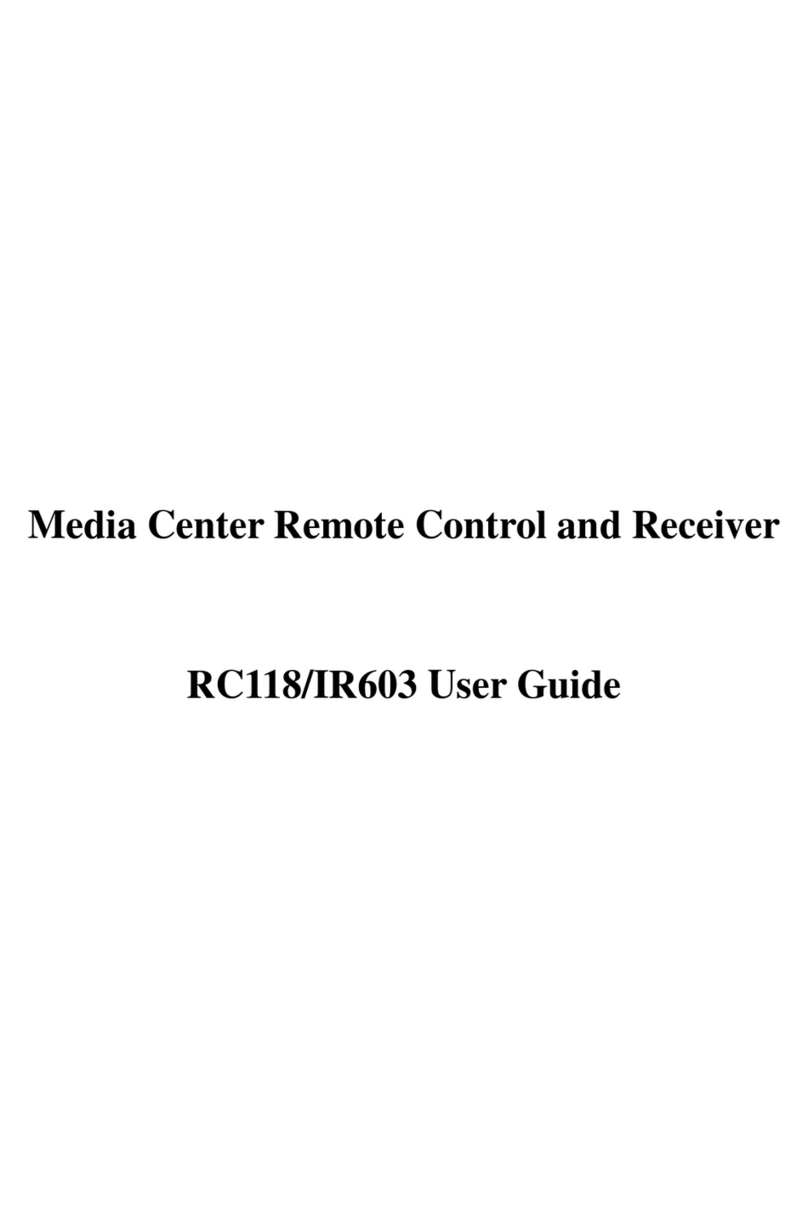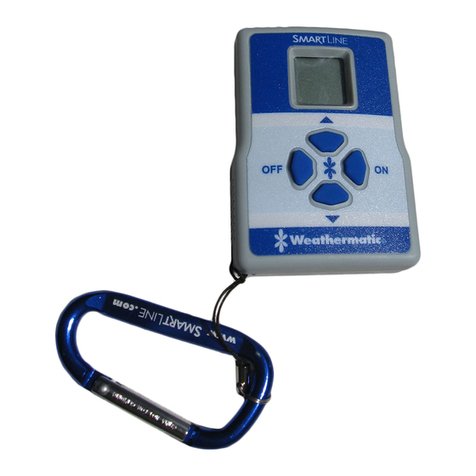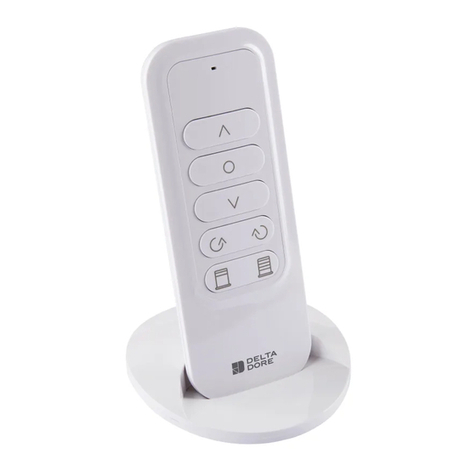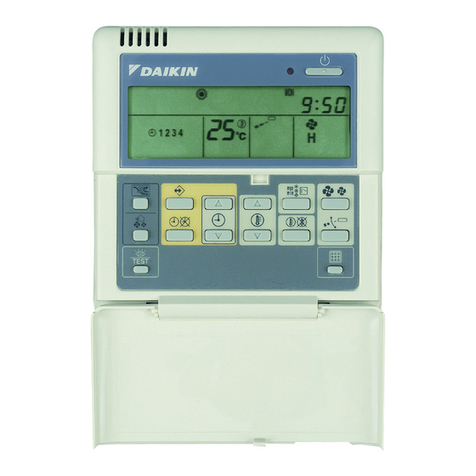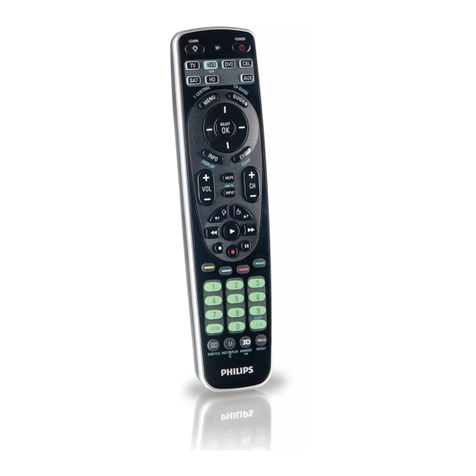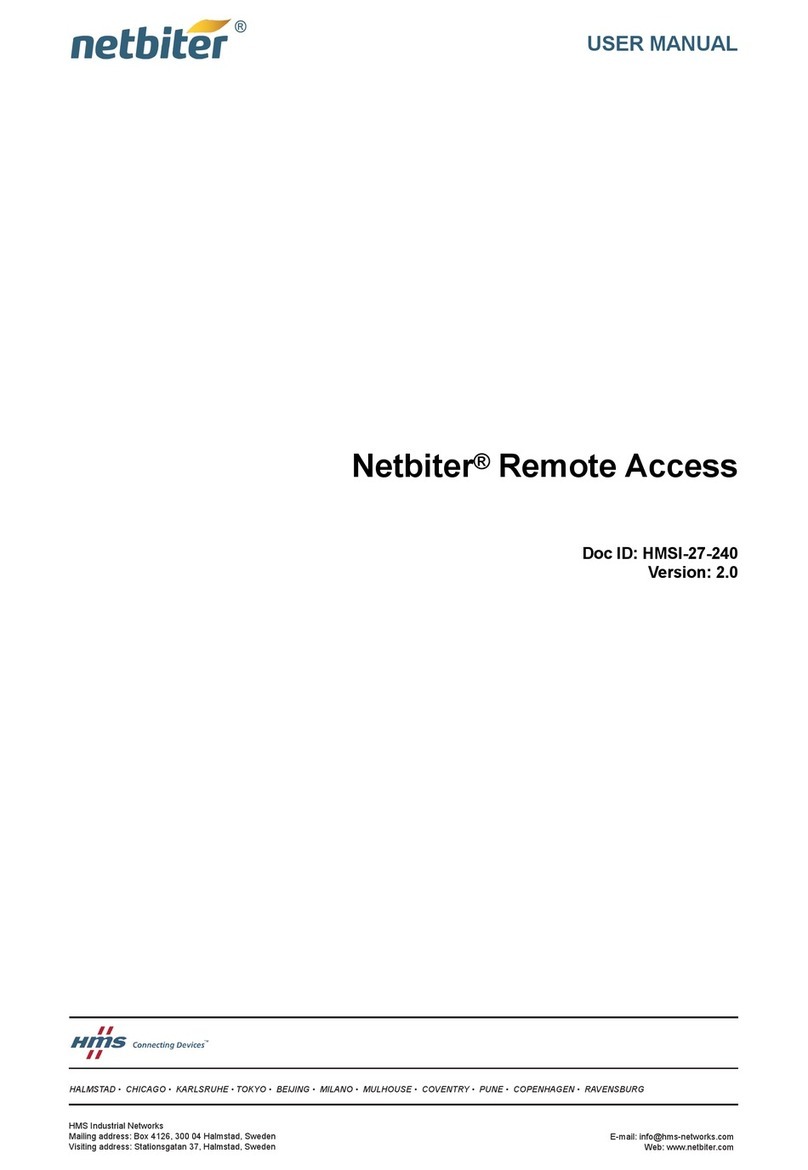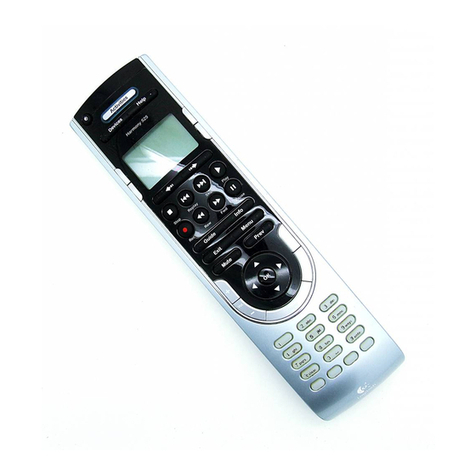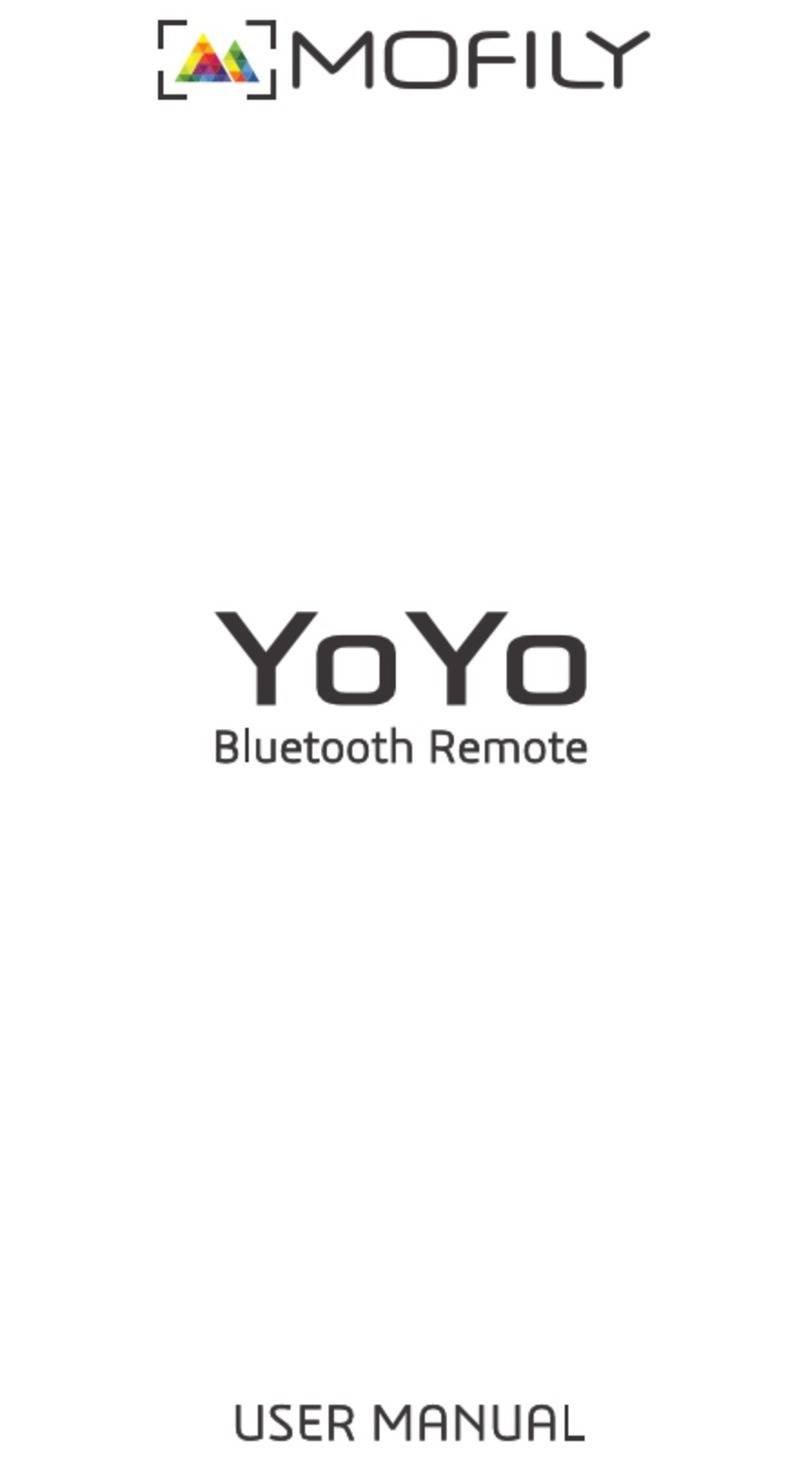Inficon RC1000 Series User manual

OPERATING INSTRUCTION
RC1000
Remote control for leak test equipment
from software
version V1.5
Catalog No.:
551-010
551-015
lina15en1-05-(1806)

2
Imprint
INFICON GmbH
Bonner Straße 498
50968 Köln
Germany
Copyright©2018 INFICON GmbH, Cologne.
This document may not be reproduced in any form without the
permission of INFICON GmbH, Cologne.

Content 3
Content
1 Operating instructions 5
1.1 How to use this manual 5
1.2 Warning and danger symbols 5
1.3 Glossary 6
2 Important safety instructions 7
2.1 Intended use 7
2.2 User requirements 7
2.3 Restrictions of use 8
2.4 Hazards in the event of intended use 8
3 Description of the RC1000 13
3.1 Use 13
3.2 Operating Elements 14
3.3 Back of the RC1000 16
3.4 Supplied equipment 17
4 Installation 18
4.1 Connection to the leak detector 18
4.2 Connecting radio transmitter and leak detector 19
4.3 Inputs and outputs 20
4.4 Wall plug-in power supply 22
5 Operating the remote control 24
5.1 Starting up the RC1000 24
5.2 Touch display operation 25
5.3 Main menu for configuration 27
5.3.1 Buttons with basic functions 28
5.3.2 Connecting / disconnecting (RC1000WL) 29
5.3.3 Setting the trigger level 30
5.3.4 Scale: scaling of the leak-rate curve 31
5.3.5 Sound volume 33
5.3.6 Recorder 34
5.3.7 Info: device information 36
5.3.8 Miscellaneous 37
5.3.8.1 Language selection: 37

4Content
5.3.8.2 Energy-saving options (RC1000WL) 38
5.3.8.3 Set Time and Date 39
5.4 Operating the leak detector 40
5.5 Paging function 42
6 Maintenance tasks 43
6.1 Spare parts 43
6.2 Maintenance 43
6.3 Cleaning 44
7 Transport and disposal 45
7.1 Transporting 45
7.2 Disposal 45
8 Technical Data 46
8.1 Weight / dimensions 46
8.2 Characteristics 46
8.3 Environmental Conditions 47
8.4 Mains power for wall plug-in power supply 47
8.5 Wireless permits of RC1000WL 47
9 Ordering information 48
10 Declaration of conformity 48
Index 52

Operating instructions 5
1 Operating instructions
1.1 How to use this manual
• Please read this manual before commissioning the
wireless RC1000WL or the wire-bound RC1000C remote
control.
• Keep the manual so that you can use it any time.
• Enclose the operating manual if the device is ever passed
on to third parties.
• We reserve the right to alter the design or any data given
in this manual.
• The illustrations are not binding.
1.2 Warning and danger symbols
Specificationsfor theprevention ofbodily injuriesof all kinds.
Specifications for the prevention of severe material and
environmental damage
Specifications for handling or use. Failure to observe these
can lead to faults or minor material damage.

6Operating instructions
1.3 Glossary
MenuThe menu enables the operator of the RC1000WL or
RC1000C remote control to program the remote control to
reflect their personal preferences. The menu has a tree
structure.
"As delivered" status
The condition of the RC1000WL or RC1000C remote control
as it left the factory.
RC1000
RC1000C (non-wireless) or RC1000WL (wireless) remote
control.
If this manual talks about general functions that apply to both
versions, it is called only RC1000.

Important safety instructions 7
2 Important safety instructions
Notice: Before commissioning the RC1000 remote control,
carefully read all safety instructions and make sure that
you have properly understood them.
2.1 Intended use
The RC1000 remote control has been designed to operate
the UL1000, UL1000 Fab, UL5000 and Modul1000 leak test
devices.
Theformerwiredremotecontrol (catalogno. 20099022)can
be replaced by the RC1000.
The RC1000 remote control must only be used for the
purpose and within the context outlined in this manual.
Use only INFICON accessories.
2.2 User requirements
• The user must be familiar with the function of the device;
he or she may only connect and operate the device after
having read and understood the operating instructions.
• The user should consult local, state, and national
agencies regardingspecific requirements and regulations
for devices with wireless transmission capability.
• In case of more questions regarding safety, operation
and/or maintenance, the user should contact our nearest
representative.
Skilled personnel
The RC1000 remote control must only be connected and
operated by properly trained staff.

8Important safety instructions
2.3 Restrictions of use
2.4 Hazards in the event of intended use
When handling the remote control RC1000:
Danger in explosive environments.
The RC1000C / RC1000WL remote control may only be
used away from explosive environments.
Possible interference with pacemakers.
The performance of pacemakers may be affected by the
magnets on the back of the RC1000C / RC1000WL remote
control. Observe the distances indicated by the pacemaker
manufacturer.
Possible liquid crystal hazard!
If the display has broken, prevent liquid crystals from
entering people's mouths or eyes. Use soap and water to
wash hands, feet or clothes that have come into contact with
liquid crystals.

Important safety instructions 9
(1) FCC: Federal Communications Commission,
approval authority for communication devices (USA)
When handling the rechargeable battery and
power supply:
Notice: Charging the battery at higher temperatures (> 40° C)
decreases its service life.
Possible radiation hazard.
When the device is operated, a minimum distance of 7 cm
between the remote control and people must be observed,
with the exception of hands and wrists.
Operation at a shorter distance than indicated above is not
allowed. The RC1000 remote control complies with part 15
of the FCC regulations(1).
Possible short circuit hazard.
In case of a short-circuit the battery might ignite, explode,
leak battery fluid, or become overheated and cause burns.
Do not short-circuit the battery of the RC1000WL remote
control.
Possible explosion hazard.
The battery of the RC1000WL remote control can explode if
it is extreme overheated.
Do not set fire to the battery as it might explode.

10 Important safety instructions
Environmental conditions of the remote control:
See also 8Technical Data.
Possible risk of damage.
The electronics of the RC1000WL remote control may be
damaged by an incorrect supply voltage.
Only use the accompanying wall plug-in power supply.
Possible risk of damage.
The RC1000 remote control may be damaged in the open
through moisture, strong insolation, or intense dust.
Only use the device inside buildings.
Possible risk of destruction.
Aggressive substances may damage the RC1000 remote
control beyond repair.
Avoid contact between the RC1000 and bases, acids, and
solvents, and do not expose itto extreme climatic conditions.
Possible risk of destruction.
TheRC1000remotecontrol maybedamagedbeyondrepair
by penetrating liquid.
Do not switch on the RC1000 remote control if liquid has
penetrated the unit.
Contact the INFICON Service Department.

Important safety instructions 11
Storage and transportation of the remote control:
Cleaning the remote control:
Notice: Clean the plastic housing of the RC1000 remote control,
thefront foiland thedisplay usinga softcloth, moistened
with some water or soap suds. Do not use any solvents!
Operating the remote control:
Notice: The performance and reliability of the RC1000 remote
control can only be guaranteed ifit is operated under the
specified conditions of use (see Technical specifications
chapter 8).
Possible risk of damage.
The RC1000 remote control may be damaged by being
stored in unfavourable conditions (too damp, too hot, too
cold, too high above sea level) for months or years (see
Technical specifications chapter 8).
If the RC1000 remote control has been stored under such
conditions, leave it switched off and contact the INFICON
Service Department.
Possible risk of damage.
The RC1000 remote control may be damaged by improper
transport.
Always transport the RC1000 remote control in its original
packaging.

12 Important safety instructions
Notice: Any changes made to the RC1000 remote control by the
user may result in a violation of statutory provisions or
mayaffect the EMC propertiesand safety of the product.
INFICON does not accept any liability for the
consequences of such changes.

Description of the RC1000 13
3 Description of the RC1000
3.1 Use
The RC1000 remote control has been designed to operate
the selected INFICON leak detectors.
The RC1000 remote control is accommodated in a robust
housing the shape of which enables ergonomic working.
Magnets on the underside of the unit enable it to beattached
to horizontal or vertical metal surfaces.
The wireless version RC1000WL enables remote operation
up to a distance of over 100 m, depending on the reception
conditions.Theintegratedrechargeablebatteryenablesover
8 hours of operation, depending on the battery level.
The leak rates can be displayed in digits or in a curve on the
3.5" colour display.
Measured values of up to several hours of recording can be
stored in an internal memory. The data storage interval is
adjustable. The data can easily be downloaded to a USB
stick via the integrated USB interface to save it.
An internal trigger can be set to provide a warning if the limit
leak rates are exceeded. An optical warning is shown on the
display and an acoustic warning signal with variable pitch
proportionally to the leak rate is sounded on the integrated
loudspeaker or the connected headphones.

14 Description of the RC1000
3.2 Operating Elements
POWER button
RC1000WL: Power switch. After pressing and brieflyholding
the switch, the operating LED lights up as confirmation and
flashes when the remote control is ready for use.
Switch off by pressing and holding the button for more than 2
seconds.
RC1000C: The remote control turns on when the cable is
plugged in.
Pressing the Power button turns the display of the remote
control on and off.
Pos. Description
1 START button
2 ZERO button
3 POWER button
4 Touch Display
5 STOP button
6 Operating LED
7 Charge LED
Fig. 1 RC1000 remote control

Description of the RC1000 15
START button
Starts the leak test of the leak detector (See 5.4).
(See the Technical Manual of the leak detector, and observe the
menu option "Control location").
STOP button
Ends leak testing (See 5.4).
ZERO button
Activates the ZERO function (See 5.4).
Touch Display
Shows measurements displayed numerically or as a curve,
indicates statuses and offers operating interfaces.
Operating LED
Flashes during normal operation.
Charging LED (RC1000WL)
Lights up while the battery is being charged.

16 Description of the RC1000
3.3 Back of the RC1000
Pos. Description
1 Magnets for attaching the unit
to metal surfaces, e.g. to the
leak detector.
2 M3 threaded bushings to
attach holders
Risk of damage.
Use screws that reach
max. 6 mm into the housing.
3 Sound outlet aperture for the
integrated loudspeaker.
4 Eye for attaching carrying
devices
(e.g. wrist band, to be ordered
separately).
Fig. 2 Back of the RC1000 remote control

Description of the RC1000 17
3.4 Supplied equipment
Cat.-No. 551-015 Remote control RC1000WL, wireless
Supplied
equipment: Remote control RC1000WL
Connection cable, 4 m
Wall plug-in power supply (for integrated battery)
Radio transmitter
Connection cable for radio transmitter
Operating instructions
Cat.-No. 551-010 Remote control RC1000C, non-wireless
Supplied
equipment: Remote control RC1000C
Connection cable, 4 m
Operating instructions
Cat.-No. 551-020 Radio transmitter
(for operating a second leak detector)
Supplied
equipment: Radio transmitter
Connection cable
Installation instructions

18 Installation
4 Installation
4.1 Connection to the leak detector
RC1000WL (wireless)
The RC1000WL remote control is connected to the leak
detector by means of a wireless data connection.
Connect the leak detector to the radio transmitter for this
purpose (see chapter 4.2).
The RC1000WL remote control is shipped set-up for connec-
tion with the supplied radio transmitter. This way, theconnec-
tion is immediately established upon turning the unit on.
Alternatively, it can also be connected by means of the
enclosed cable, similar to connecting the RC1000C (non-
wireless) remote control. In this case only one connection
cable must be used with the RC1000WL, not more.
RC1000C (non-wireless)
The RC1000C (non-wireless) remote control is connected to
the leak detector by connecting the enclosed connection
cable to the RJ 25 socket (see Fig. 4).
The connection cable of theRC1000C can beextended up to
28 m by using one or more extension cables.
(Cat.-No. 14022)
Notice: The leak detectors should have at least following
software versions:
UL1000/UL1000 Fab and UL5000: SW V4.4,
Modul1000: SW V1.6.

Installation 19
4.2 Connecting radio transmitter and leak
detector
Notice: To extend the wireless operating range an extension
cable also can be used to position the radio transmitter
away from the leak detector, if reception is poor (e.g. at
the ceiling of the room).
Notice: The operating range of the radio transmitter will be
affected by metal objects in its near, avoid installing the
antenna near such objects.
Connecting the radio transmitter for
the RC1000WL (wireless) remote
control:
1 Use Velcro to position the
radio transmitter (1) in a
suitable location on the
SmartTest leak detector so
that there is a direct line of
sight between the antenna
and the remote control.
2 Connect the connecting cable
of the radio transmitter to the
RJ25 socket of the leak
detector (2).
Fig. 3 Connecting radio transmitter and leak detector (RC1000WL)

20 Installation
4.3 Inputs and outputs
The inputs and outputs of the RC1000 remote control have
covers to prevent large dirt particles and moisture from pen-
etrating.
Notice: The IP42 safety class can only be guaranteed if the
covers are closed.
RJ25 socket
The RJ25 socket is located at the underside of the RC1000
remote control and closed with a protective plug when
delivered.
Notice: Leave the protective plugin the socket when the cable is
not connected.
Notice: We recommend only inserting and removing the RJ25
plug as often as is necessary for operation.
Fig. 4 RJ25 socket on the bottom of the remote control
Other manuals for RC1000 Series
1
This manual suits for next models
4
Table of contents
